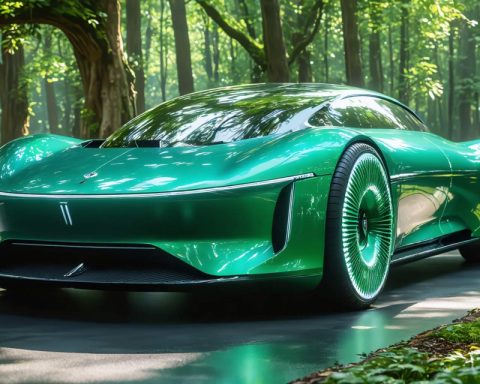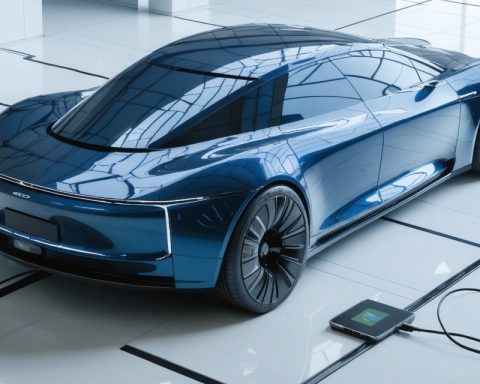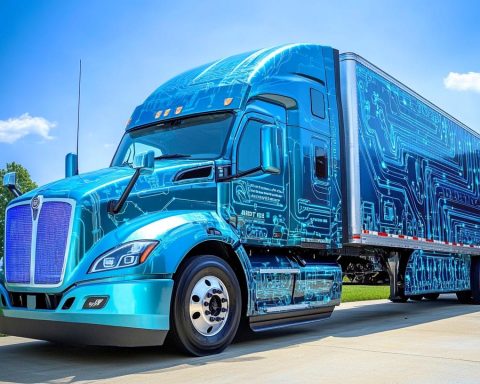- Electric vehicles (EVs) are transforming transportation with quieter, cleaner, and more efficient commutes, driven by advanced EV battery technology.
- Lithium-ion batteries are central to this revolution, offering extended range (over 300 miles), alleviating “range anxiety,” and enhancing consumer confidence.
- EVs provide instantaneous torque for a responsive and exhilarating driving experience while contributing to quieter urban environments.
- Sustainability is key, with manufacturers focusing on eco-friendly batteries, recycling initiatives, and solutions for battery longevity and material sourcing.
- Digital integration in EVs offers smart features, optimizing energy use and providing real-time feedback, enhancing the driving experience.
- Future possibilities include vehicle-to-grid technology, making EVs part of sustainable energy solutions and powering homes.
- The shift to electric is about more than transportation—it’s a movement toward an ecological and interconnected future.
The hum of electric vehicles (EVs) quietly revolutionizes our daily commute, and at the heart of this transformation lies a marvel: the EV battery. These unassuming power packs drive a seismic shift in how we move, offering not just a cleaner alternative but a more dynamic daily experience.
Imagine gliding down the highway with scarcely a whisper from your tires, the plush leather of the seat beneath you unmarred by vibrations. Visualize your journey’s soundtrack, played through the car’s premium stereo system, undistorted by engine noise. This serene voyage, once a futuristic fantasy, now unfolds thanks to the relentless march of EV battery technology.
At the core of this evolution is the lithium-ion battery—compact and powerful. They propel vehicles farther on a single charge, some models exceeding 300 miles, reducing “range anxiety,” a common concern of early adopters. This leap exemplifies how cutting-edge research can rapidly enhance consumer confidence and convenience.
But there’s more to these batteries than just miles. They represent speed and efficiency, transforming the driving experience. Envision electric motors delivering instant torque from a standstill, making city driving responsive and exhilarating. Cities are reshaped as these silent architects reduce the collective drone of traffic, contributing to quieter, more livable urban environments.
The advancement doesn’t stop at performance. EV batteries signify a commitment to sustainability. Leading manufacturers invest heavily in ensuring these batteries are not just powerful but also more environmentally friendly. Recycling systems are set in motion, recuperating valuable materials, and researchers continually work to overcome challenges like battery longevity and material sourcing.
For car enthusiasts, the appeal of EVs also lies in digital integration. Many EVs are designed with technology at their core, offering smart features that adapt to your driving style, optimize energy consumption, and even provide real-time feedback to enhance efficiency. The act of driving is no longer just mechanical; it is becoming increasingly thoughtful and interconnected.
The transformation of EV batteries extends beyond transportation itself; it contributes to a broader ecosystem. Imagine homes powered by vehicle-to-grid technology where your parked car could one day help power your house, smoothing out energy demands and increasing grid resilience. Such synergy hints at a future where EVs are integral components of sustainable energy solutions, not merely modes of transport.
As we shift gears into an electric era, the tale of the EV battery isn’t just about what’s under the hood. It’s about inspiring commutes, revitalized cityscapes, and a bold move towards sustainability. These batteries are more than mere components; they are catalysts shaping a future of clean, efficient, and thrilling transportation.
The Takeaway: Embrace the future with EV batteries at the helm, steering us toward a quieter, cleaner, and more connected world. The next phase of transportation is not just about getting from point A to B; it’s about transforming our daily journeys into an ecological adventure. As the roads fill with the soft whir of electric motors, remember that at the core lies freedom charged with innovation.
The Hidden Powers of EV Batteries: What You Need to Know About the Future of Transportation
Key Features and Advancements in EV Battery Technology
The revolution spurred by electric vehicles (EVs) is significantly driven by the rapid advancements in EV battery technology. These batteries not only allow vehicles to travel farther on a single charge but are pivotal in transforming the driving experience into one that is cleaner, quieter, and more exciting.
1. Battery Capacity and Range
One of the major concerns with EVs has always been “range anxiety.” With the advent of new lithium-ion batteries, many models now offer a range of over 300 miles on a single charge. This advancement has made EVs more appealing to a wider audience, ensuring that long-distance travel is not just feasible but convenient.
2. Fast Charging Capabilities
The infrastructure for EVs is expanding with a focus on fast-charging stations. This development drastically reduces charging times, making it possible to charge an EV to 80% in under 30 minutes at some stations, as noted by sources like Electrify America.
3. Sustainability and Environmental Impact
EV batteries are taking strides towards sustainability. Companies are investing in recycling programs to recover valuable materials like lithium, cobalt, and nickel. The goal is to create a closed-loop system to minimize environmental impact, as outlined by organizations like Research.fi.
4. Vehicle-to-Grid Technology
V2G (vehicle-to-grid) technology is on the horizon, allowing EVs to integrate with the power grid and potentially offer new energy solutions for homes. By using EVs as storage units, they could play a crucial role in stabilizing energy grids and enhancing renewable energy usage.
Practical How-To Steps: Enhancing Your EV Experience
1. Optimizing Battery Life: To maximize your battery’s lifespan, avoid frequent fast-charging and maintain a charge level between 20% and 80%. Ensure the vehicle is not exposed to extremely hot or cold temperatures for extended periods.
2. Smart Energy Consumption: Engage energy-saving modes when driving, utilize regenerative braking, and plan your routes to include charging stops efficiently.
3. Regular Software Updates: Regularly update your vehicle’s software, as manufacturers often release features that improve battery management and overall efficiency.
Market Forecasts and Trends
As per data from sources like the International Energy Agency, the global EV market is expected to grow at an annual rate of 20% over the next decade. This surge is driven by decreasing battery costs, policy incentives, and improved battery technologies.
Pros and Cons of EVs
Pros:
– Reduced carbon footprint
– Lower operating costs
– Quiet and smooth driving experience
– Potential for integration with home energy systems
Cons:
– Higher initial purchase price
– Limited charging infrastructure in certain areas
– Battery disposal and recycling challenges
Actionable Recommendations
– If you’re considering switching to an EV, take advantage of government tax incentives and rebates, which can significantly lower the purchase cost.
– Explore apps and networks that can help you locate charging stations, such as the ChargePoint app, to ease range anxiety during long trips.
– Stay informed about updates in V2G technology, which may transform how you use energy at home.
Electric vehicles are paving the way for a sustainable future in transportation. Stay ahead of the curve by embracing these innovations today and enrich your commuting experience for a greener tomorrow.

















